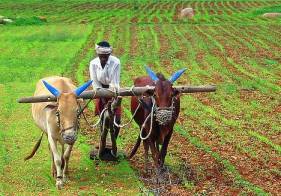Preços Globais dos Alimentos atingem Novo Recorde
February 9, 2011
The Real Agenda
9 Fevereiro, 2011
Preços globais dos alimentos atingiram seu maior nível já registrado em janeiro e vão continuar a subir durante meses, a agência alimentar da ONU disse nesta quinta-feira, alertando que os países mais afectados poderão enfrentar turbulência.
O aumento dos preços dos alimentos têm sido citados entre as forças motrizes da recente turbulência no norte da África, incluindo o Egito e a queda do presidente da Tunísia, Zine El Abidine Ben Ali.
E em seu último levantamento, a Agencia das Nações Unidas para Alimentação e Agricultura informou que seu índice, que acompanha as variações mensais de preços de uma variedade de alimentos básicos aumentou em média 231 pontos em janeiro – o maior desde que os registros começaram em 1990.
“Os novos dados mostram claramente a pressão ascendente sobre os preços mundiais dos alimentos. Esses preços elevados tendem a persistir nos próximos meses “, disse o economista e especialista da FAO Abdolreza Abbassian em um comunicado.
O índice subiu 3,4 por cento de dezembro – com grandes aumentos, especialmente os produtos lácteos, cereais e o petróleo. Os aumentos mais significativos foram na China, Índia, Indonésia e Rússia, os dados mostraram no relatório mensal da FAO.
“Há muitos fatores que podem causar distúrbios no país e a comida é uma delas”, disse Abbassian, observando, contudo, que vários países têm melhorado sua gestão dos preços após uma série de revoltas em 2007 e 2008 .
“Eles aprenderam a partir de episódios anteriores”, disse ele, acrescentando porém: “Estes são, obviamente, tempos muito difíceis. Agora há esperança de que os preços regressem aos níveis que podem ser considerados normais, mas somente no verão.”
Dados da FAO, sediada em Roma mostraram que os preços dos produtos lácteos aumentaram 6,2 por cento em dezembro, óleos e gorduras aumentaram 5,6 por cento, enquanto os cereais subiram 3,0 por cento devido à redução da oferta mundial de trigo e milho.
“O aumento de preço é devido à forte demanda de exportação em relação ao mês passado e preocupações sobre a oferta apertada de trigo de alta qualidade. O mercado também foi apoiado pelos preços do petróleo e um dólar fraco”, a FAO disse.
Os preços da carne mantêm-se estáveis devido à queda dos preços na Europa como resultado do susto no mês passado pelo envenenamento de dioxinas nos ovos e carne suína na Alemanha, compensado por um ligeiro aumento nos preços de exportação no Brasil e dos EUA.
“Os preços elevados dos alimentos são de grande preocupação, especialmente para países de baixa renda com déficit de alimentos que podem ter problemas financeiros e tenham que realizar importações de alimentos para as famílias pobres que gastam grande parte de sua renda em comida”, disse Abbassian.
A agencia Global Relief Agency, disse: “Milhões de vidas estão em perigo.”
“Os pobres nos países em desenvolvimento gastam entre 50 e 80 de sua renda em alimentos, pelo que os preços mais altos e preços imprevisíveis são uma séria ameaça à sua capacidade de comer”, disse a Oxfam em comunicado .
Oxfam culpou os aumentos de preços na redução da produção devido ao mau tempo, o encarecimento do petróleo, o que torna o preço dos fertilizantes e o transporte mais caro, maior demanda por biocombustíveis, as restrições a exportação e a especulação financeira.
Ele exortou os governos a implementar programas de proteção social para os mais afetados pelo aumento dos preços e ajudar a controlar os preços “cada vez mais apoio aos investimentos na agricultura em pequena escala.”
Dados da FAO mostram que o índice de preços dos alimentos atingiu os 200 pontos durante o ano de 2008, no auge da crise alimentar 2007/2008. Ele passou desse nível pela primeira vez em outubro de 2010, com 205 pontos.
Na África, a Somália tem sido particularmente afectadas pela subida dos preços do sorgo e do milho vermelho, devido à má colheita em 2010, enquanto a Uganda tem visto um aumento no preço do milho devido à forte demanda dos países em desenvolvimento vizinhos.
Enquanto isso, a agitação na Costa do Marfim tinha ajudado a elevar os preços na África Ocidental devido a seu status como um centro de transportes chave, disse ele.
No entanto, os aumentos mais dramáticos ocorreram na Ásia, particularmente Bangladesh, China, Índia, Indonésia e China, disse.
